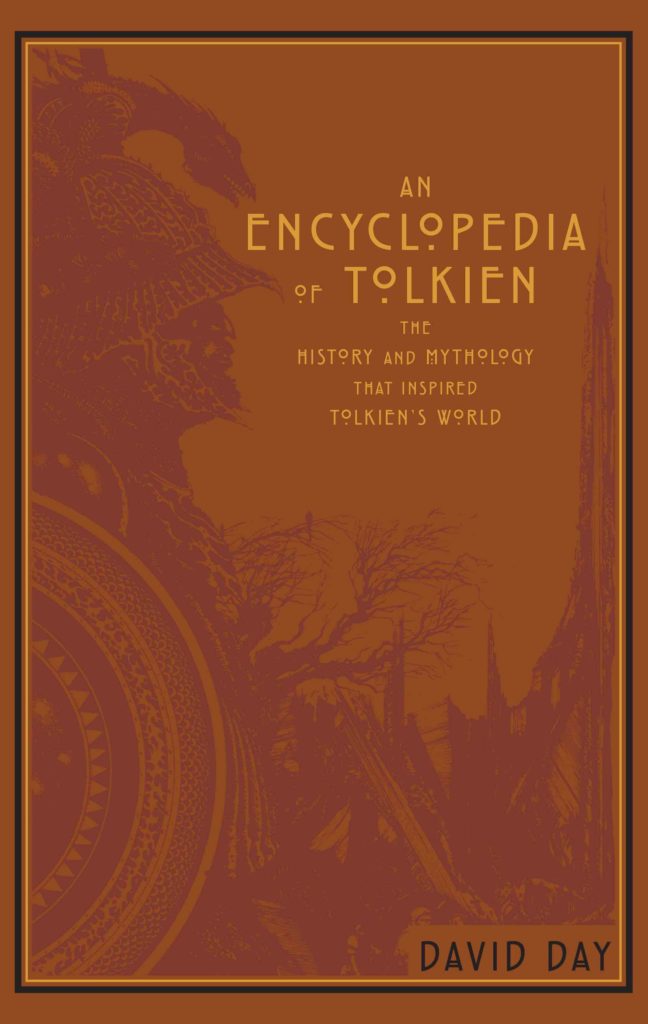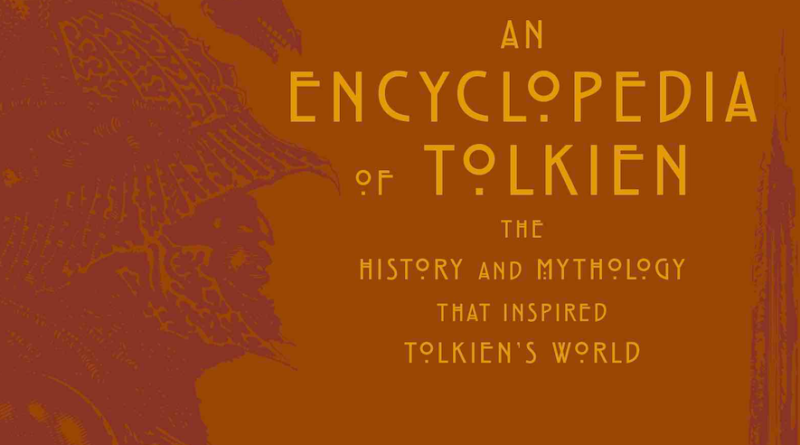INTERVIEW: New Encyclopedia explores Tolkien’s Middle-earth
Image courtesy of Canterbury Classics / Provided by Media Masters Publicity with permission.
J.R.R. Tolkien, the beloved author of The Lord of the Rings trilogy and its prequel The Hobbit, created a mythical world of orcs, wizards, hobbits and elves. His books continue to invigorate readers, both old and young, and the cinematic adaptations by Peter Jackson were considered classics almost the same day they were released.
The love for Middle-earth — Tolkien’s created fantasia of fantasy — continues into 2019 and is the subject of An Encyclopedia of Tolkien: The History of Mythology That Inspired Tolkien’s World, out now from Canterbury Classics. Author David Day’s A-to-Z tome presents the characters and places of Tolkien’s fiction in a leather-bound edition that runs 544 pages. The unofficial, unauthorized work also focuses on Tolkien’s inspirations for his world-building.
Hollywood Soapbox recently exchanged emails with Day about the compendium. Questions and answers have been slightly edited for style.
When did you first fall in love with the works of J.R.R. Tolkien?
I first read J.R.R. Tolkien’s The Lord of the Rings in 1969 as a student and was immediately captivated by it. From early childhood I was fascinated by Greek and Norse mythologies, but it was not until the publication of The Silmarillion in 1977 that I fully understood the immense scope of Tolkien’s vast mythology and cosmos. Tolkien’s novels and his creation of Middle-earth and the Undying Lands is a feat of imagination comparable to the task of the epic poet Homer — before writing the Iliad and the Odyssey — should be required to invent the whole of Greek mythology and history.

What can fans of Middle-earth expect in this book? Is it intended for readers who have already read Tolkien’s works?
An Encyclopedia of Tolkien: The History and Mythology The Inspired Tolkien’s World was written for both die-hard fans and general readers. It is a beautifully illustrated, leather-bound source book arranged in an easily accessible alphabetical form. It is a kind of literary detective casebook that amounts to an investigation of the mind of J.R.R. Tolkien and traces the mythological, literary, historical, biographical and philological sources that inspired the author in his creation of Middle-earth.
How much research goes into a project like this?
Forty years ago this year, I published A Tolkien Bestiary, the first fully illustrated reference book and guide to Middle-earth. Since that time, I have published a dozen books on the works of J.R.R. Tolkien. An Encyclopedia of Tolkien in a sense draws on all my research work over that time — so you could say it has taken over 40 years for me to research this book.
What do you think it is about Tolkien’s works that make them so popular? When considering his success, why him and not some other fantasy writer?
As Tolkien himself wrote: ‘I am interested in mythological invention, and the mystery of literary creation … I had a mind to make a body of more or less connected legend, ranging from the large and cosmogenic, to the level of romantic fairy-story which I could dedicate simply: to England; to my country.’ So, it was Tolkien’s wish in his writing to create an original mythology for England that would be comparable to that of the Greeks, Romans, Norsemen and German nations. It seems he entirely succeeded in doing so.
And An Encyclopedia of Tolkien: The History and Mythology That Inspired Tolkien’s World is a reader’s guide to understanding where and how Tolkien’s writing is linked to the archetypal themes and motifs of the literature of other nations and cultures.
Have you ever considered what some of these individual characters and lands might be doing outside the boundaries of Tolkien’s works? Have you ever considered some new storylines to advance his narratives?
It has been said that Tolkien is the virtual inventor of the epic fantasy novel, so his influence has been inescapable — and there has been a veritable avalanche of thousands of imitators. As time passes, in fact, more and more of Tolkien’s world is escaping the boundaries of literature and invading the real world. Computers are called Gandalf, bookstores are called Bilbo’s, resorts are called Rivendell and Lothlórien, jewellers are called Gimli’s, computer games are called Gondor, Rohan, Imladris, etc.
As to new storylines for Tolkien narratives, these are certainly currently being explored by film and television writers: most extensively by those Elvish scribes now employed by Amazon Studios in their billion-dollar TV series that expand upon Tolkien’s histories of the Second Age of Middle-earth as outlined in the Silmarillion.
By John Soltes / Publisher / John@HollywoodSoapbox.com
An Encyclopedia of Tolkien: The History of Mythology That Inspired Tolkien’s World by David Day is available now from Canterbury Classics. Click here for more information.

